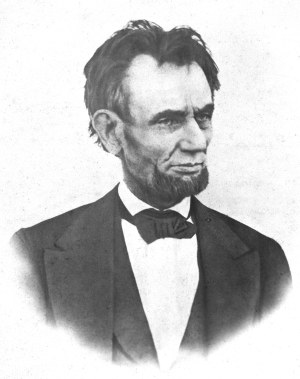
One day — said Mr. Lincoln — when I first came here, I got into a fit of musing in my room and stood resting my elbows on the bureau. Looking into the glass it struck me what an awfully ugly man I was. The fact grew on me and I made up my mind that I must be the ugliest man in the world. It so maddened me that I resolved, should I ever see an uglier, I would shoot him on sight. Not long after this, Andy — naming a lawyer present — came to town and the first time I saw him I said to myself, ‘There’s the man.’ I went home, took down my gun and prowled around the streets waiting for him. He soon came along. ‘Halt, Andy,’ said I, pointing the gun at him; ‘say your prayers, for I am going to shoot you.’ ‘Why, Mr. Lincoln, what’s the matter? What have I done?’ ‘Well, I made an oath that if I ever saw an uglier man than I am I’d shoot him on the spot. You are uglier; sure; so make ready to die.’ ‘Mr. Lincoln, do you really think that I am uglier than you?’ ‘Yes.’ ‘Well, Mr. Lincoln,’ said Andy deliberately and looking me squarely in the face, ‘if I am any uglier, fire away.’
— Harper’s Magazine, October 1877, quoted in Charles Anthony Shriner, Wit, Wisdom and Foibles of the Great, 1918




